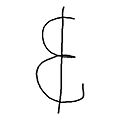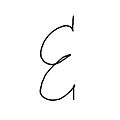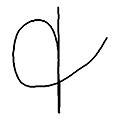Ampersand facts for kids
Quick facts for kids Ampersand |
|
|---|---|
| & | |
| ﹠, ∧, ۽, ⅋, &, et, 🙰, 🙱, 🙲, 🙳, 🙴, 🙵, Ɛ̸, | |
 |
|
| Usage | |
| Writing system | Latin script |
| Type | Logographic and Ideographic |
| Language of origin | Latin language |
| Phonetic usage | // // // |
| Unicode value | U+0026 |
| Alphabetical position | (27) |
| History | |
| Development | |
| Time period | ~100 to present |
| Descendants | • ⅋ |
| Sisters | ϯ (ligature of ⲧ and ⲓ in a similar fashion to &) |
| Transliteration equivalents | + ۽ ∧ |
| Variations | ﹠, ∧, ۽, ⅋, &, et, 🙰, 🙱, 🙲, 🙳, 🙴, 🙵, Ɛ̸, |
| Other | |
| Other letters commonly used with | &C (etC) |
| & | |
|---|---|
|
Ampersand
|
|
The ampersand ("&") is a special symbol that means "and". You often see it in company names like "Barnes & Noble" or "Procter & Gamble". It's a very old symbol that comes from the Latin word et, which also means "and".
Contents
What is the Ampersand?
The ampersand is a type of symbol called a logogram. This means it's a single symbol that stands for a whole word. For example, the "$" symbol is a logogram for "dollar". The ampersand is a logogram because it represents the word "and".
How the Ampersand Was Created
The ampersand is also a ligature. A ligature is when two or more letters are joined together to form one new symbol. The ampersand was originally made by combining the letters 'e' and 't' from the Latin word et. Imagine writing 'e' and 't' so quickly that they blend into one shape – that's how the ampersand was born!
Using "&c" or "etc."
When you see "&c" or "etc.", it's a short way of saying "et cetera". This is a Latin phrase that means "and other things" or "and so on". People use it at the end of a list to show that there are more items, but they don't want to write them all out. For example, "I like apples, bananas, oranges, etc." means "I like apples, bananas, oranges, and other fruits."
Images for kids
-
A handwritten plus sign used, like the ampersand, to mean 'and'.
See also
 In Spanish: & para niños
In Spanish: & para niños






